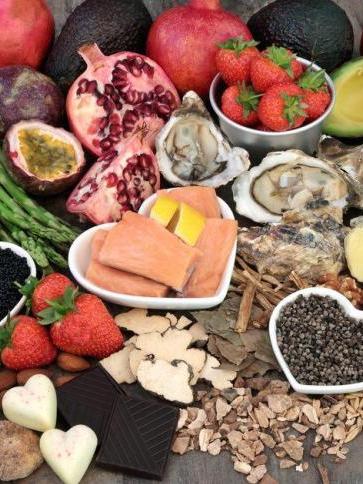Historically, Mexican cuisine has its roots in Mesoamerican cooking, with the Mayan and Aztec civilisations having a particularly strong influence. Following the Spanish invasion of Mexico in the 16th century, European, Caribbean and African ingredients were gradually introduced into the country’s culinary lexicon. Over time, these influences have further evolved and diversified in the different regions of the country, giving rise to a wide ranging array of dishes to tantalise the tastebuds - and sometimes challenge an adventurous eater. Here are six exotic ingredients used in Mexican cuisine.

Not just an emergency source of hydration in a desert in a doomsday scenario, nopal (prickly pear cactus pads), are commonly used in Mexican cooking. These spongy plants, which taste like a cross between a non-spicy pepper and aloe vera, are commonly sold fresh in markets in Mexico, with the spines removed. They can be eaten raw in a salad, grilled over a fire, cooked in stews, fried with eggs or together with meat for taco fillings.
Ants
High in protein and plentiful in nature, insects have recently been touted as the new superfood that could help solve the world’s food shortage problems. Well, the Mexicans have been eating ants for centuries. In Oaxaca, chicatanas (flying ants) emerge once or twice a year during the rainy season and are harvested to be ground into a salsa that is eaten with tortillas. For a more refined version, head to Pujol in Mexico City, for its signature smoked baby corn with powdered ants mayonnaise. Earthy and sweet in taste, with a lingering finish, if ants are cooked like this all the time, they might have a fighting chance at going mainstream.

Consider sal de gusano (worm salt) the all natural flavour enhancer of Mexican cuisine. It is made of a blend of three ingredients - ground rock salt, chilli peppers and powdered gusano, the worm larvae that grows in the stems of agave plants used to make tequila and mezcal. Just like salt and lemon wedges with tequila shots, worm salt and orange slices are often served to complement a pour of mezcal. The subtle smokiness of the powdered worm together with the heat of the chilli adds an additional dimension to the earthy taste of this artisanal spirit that’s rarely found outside the country. Worm salt is also often served in a little dish at traditional Mexican eateries and can be sprinkled on anything to add more spice and flavour to anything on the table.
Huitlacoche
Whether it is called Mexican truffle or the somewhat less appealing corn smut, huitlacoche (pronounced weet-la-coach-eh) refers to the same thing - the grey fungus that grows on corn. Typically in season between May and November, the fungus, which looks like a grey, spongy mass, turns black when cooked. It tastes similar to mushrooms with a slightly fermented edge, so it is typically used in similar ways, such as in sauces or soups. On the streets, huitlacoche is most commonly cooked with cheese quesadillas.

No introduction to Mexican cuisine is complete without mole (pronounced mo-lay), a centuries old sauce that has its roots in the regions of Oaxaca and Puebla. What’s interesting is that there is actually no fixed recipe for this rich, complex sauce. Instead, a blend of up to 30 types of chilli peppers, nuts, fruit and seeds, are ground up, roasted and simmered for hours until a resulting thick, gooey sauce is formed.
Chilli peppers
Spicy chillies are not uncommon in Southeast Asian cuisine, but the range and variety used in Mexican cuisine is vastly different from those found in Asia. At least 12 different types are commonly found in Mexico and form the heart of many Mexican dishes. They can be used in any combination to create different flavour profiles, especially in the fresh salsas that are often served as condiments at meals. For instance habaneros, which have a fruity, herbal flavour turn from green to yellow, orange and red when they ripen and are commonly used in spicy salsas in the Yucatan region. Small green serranos have a similar grassy flavour to jalapenos but are spicier compared to the former. Poblanos, which have a triangular shape, are meatier and have an earthier flavour that becomes even more pronounced when they are sun dried.



















